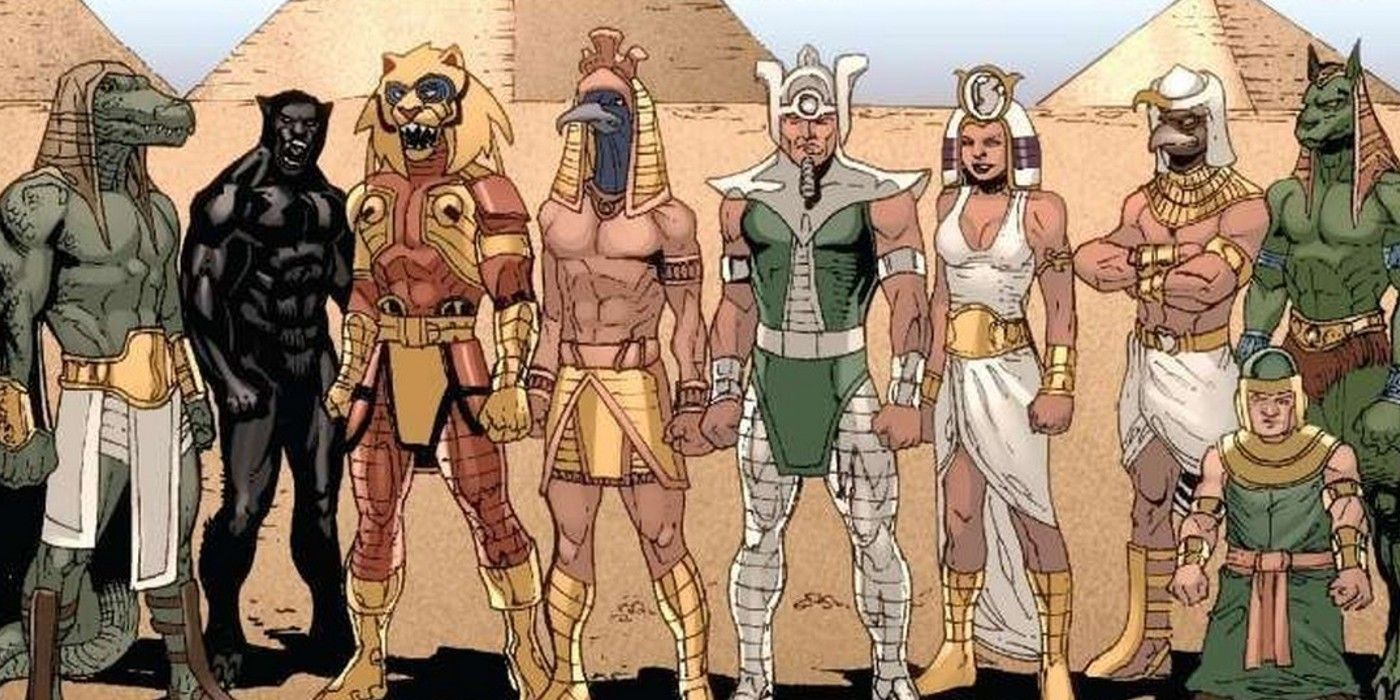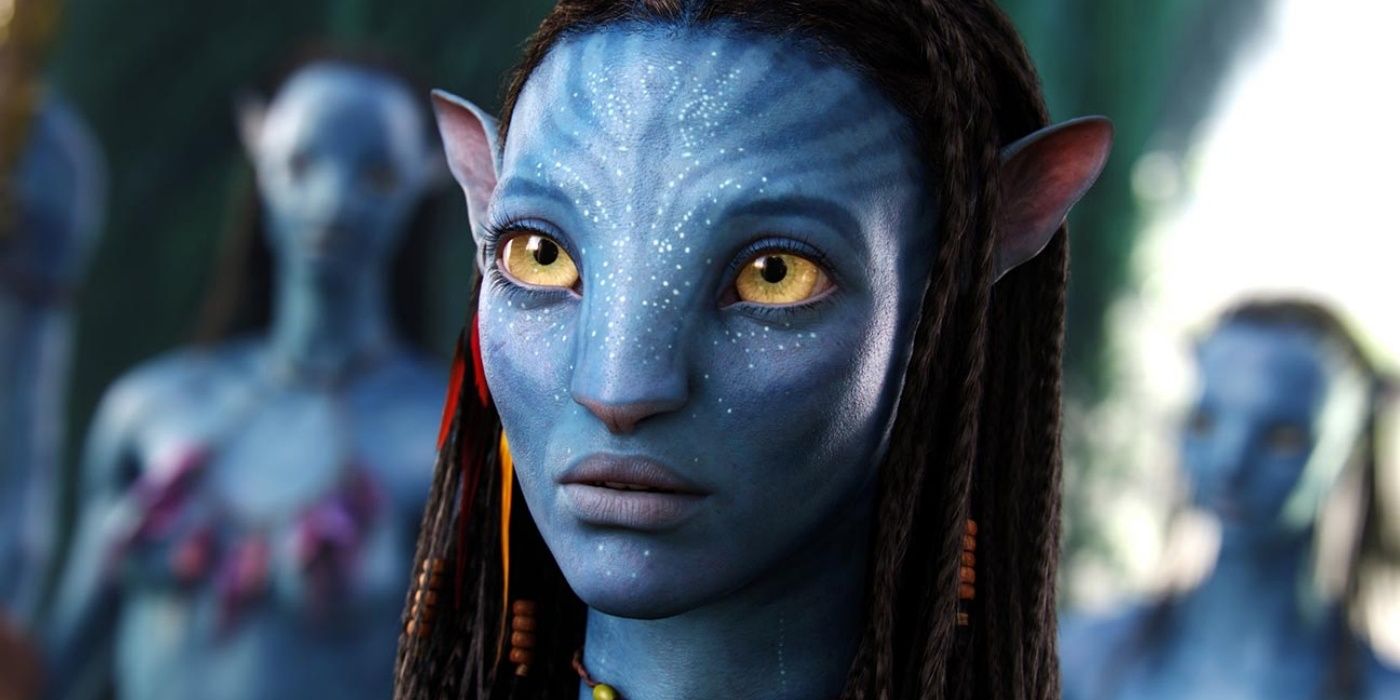Moon Knight Episode 1 Easter Eggs & Marvel References Explained

Caution: spoilers ahead for Moon Knight episode 1
Here are all of the Marvel references and Easter eggs lurking in Moon Knight episode 1. Following hot on Clint Barton's heels, Moon Knight is Disney+'s latest addition to Kevin Feige's MCU kingdom, but Oscar Isaac is worlds away from festive larking and humorous LARPing. The Moon Knight premiere introduces Isaac as Steven Grant - a mild-mannered gift shop assistant at London's National Art Gallery. Steven, in his own words, believes he "wanders about" at night, but as alluded to later in the episode, he's actually living with DID (Disassociative Identity Disorder), and "Steven Grant" represents one of multiple internal identities.
One of those identities is the formidable mercenary known as Marc Spector, and the back-and-forth between alters takes Moon Knight's premiere from London to the Alps, by way of ancient Egypt. Predictably, then, Moon Knight isn't your typical MCU product - and that goes for its philosophy toward Easter eggs too. Whereas Marvel fans are accustomed to (nay, expecting) references to past MCU figures and events, Moon Knight exists in total isolation thus far. Were it not for the famous introductory title card, the casual fan would have no idea they're watching a Marvel property.
Fortunately, Steven Grant's adventures do hatch a collection of comic book references, character throwbacks, and cool moments of foreshadowing. These are the Easter eggs we found in Moon Knight episode 1, the ominously-titled "The Goldfish Problem."

Moon Knight begins in appropriately odd fashion, with Ethan Hawke's cult leader villain, Arthur Harrow, filling his shoes with glass before slipping them on. Assuming he's not in training to become the MCU's Derren Brown, this introductory sequence is likely a reference to Harrow's counterpart from the Marvel comics. Introduced in 1985's Moon Knight #2, Dr. Harrow was a scientific expert in "pain theory" (i.e. how to block out the neural pain response) and lives with an incurable debilitating condition that causes constant agony. Other than skulking around small towns in the Alps killing old women, Arthur Harrow's profession isn't mentioned in Moon Knight. The glass slipper ordeal could point towards his comic origin as a pain-obsessed scientist.

The MCU has been teasing Namor the Sub-Mariner for so long at this point, it's easy to get jumpy over any minor reference to Atlantis. With this in mind, a London shop called "Atlantis" can be spotted when Oscar Isaac's Steven runs for his bus. The fictional location was heavily teased in both Iron Man 2 (the SHIELD map) and Avengers: Endgame (Okoye's "underground earthquakes"), and although Namor's character rights have proven a sticky subject, he's a strong rumored addition for Black Panther: Wakanda Forever. Is Moon Knight's watery storefront another little breadcrumb?

Everybody has the misfortune of knowing someone like Donna. Steven Grant's patronizing museum supervisor perhaps doesn't immediately strike viewers as an established Marvel comic character, but her name derives from Donna Kraft, who debuted in 1992's Moon Knight #39 as Marc Spector's publicist. The live-action version shares little else in common with Kraft, but it's amusing how Moon Knight flips Donna from Marc's employee to Steven's boss.

Assuming dots are connected in the end, Moon Knight poses something of a god problem for MCU continuity. When Chris Hemsworth's Thor brought Asgard into Kevin Feige's realm, Earth's mythological gods (Thor, Odin, Hela, etc...) were redefined as aliens who became figures of worship after visiting Earth in centuries past. Thus far, Moon Knight's Egyptian gods appear as traditional deities, rather than advanced beings from another world. Happily, an Easter egg might've already solved that disconnect.
Moon Knight drops several references to the Ennead - a "super-group" of Egyptian gods. Although the concept itself exists within genuine Egyptian mythology, Marvel comics adapted the Ennead in 1950's Marvel Tales #96. This flock of gods originally hailed from a pocket dimension known as the Celestial Heliopolis, but could travel to Earth via a gateway. Said gateway opened into ancient Egypt and, similar to Norway's relationship with the Asgardians, the visitors become worshiped by locals. Moon Knight episode 1's emphasis upon the Ennead's importance suggests this idea could carry over into live-action.

It's testament to Oscar Isaac's Moon Knight performance that ten minutes with Steven Grant, and your heart is already breaking. To seal that deal, a silent and motionless living statue street performer is Steven's closest friend. Portrayed by Shaun Scott, the golden fellow doesn't offer his name (or, indeed, anything), but Moon Knight credits him as "Crawley." Similar to Donna/Donna Kraft, Crawley's name is taken directly from Moon Knight's adventures in the Marvel comics. Specifically, it's a reference to Bertrand Crawley - a homeless man who serves as Marc Spector's informant. His transition from living on the streets to street performer echoes Donna switching from Marc's employee to employer, with both honoring the source material despite taking a unique direction.

When Steven Grant discovers Marc Spector's burner phone, he's realizes his alter has been getting plenty of attention from a woman called Layla. Though she goes by a different name, Layla (who we know shall appear in future episodes played by May Calamawy) is very likely Moon Knight's interpretation of Marlene Alraune. Making her Marvel comic debut in 1976, Marlene Alraune is an archaeologist, and romantic partner to Marc Spector. Though she's yet to feature onscreen, Layla is also romantically involved with Oscar Isaac's Marc alter, and also confirmed as an archaeologist.

The only name rubbing shoulders alongside Layla in Marc Spector's secret phone book is a "Duchamp." Considerably easier to decipher than Layla, Duchamp must be a reference to Jean-Paul Duchamp - one of Moon Knight's allies from the comics. An ex-member of the French foreign legion, Duchamp wasn't expected to feature in Moon Knight, and there's no actor announced thus far. Maybe episode 1's phone book nod is just a passing Easter egg tribute for comic fans, or maybe it's the prelude to a surprise appearance from one of Moon Knight's most popular sidekicks.

Moon Knight relies heavily upon imagery and symbolism to foreshadow Steven Grant's inner powers - sometimes subtly, sometimes less so. He wears white in bed, covers the floor in sand, exterior shots explicitly show the moon, and there's a white circle motif running through his apartment. Perhaps the best example, however, comes in the moment Steven Grant first hears Marc Spector in Moon Knight episode 1, with the mercenary appearing to his alter in a round, circular, white mirror very reminiscent of the moon. It's a neat visual representation of the superhero secret Marc Spector is hiding, but the biggest red flag, of course, is how a museum gift shop employee can afford such a massive apartment at London's rent prices.

Sometimes, the absence of an Easter egg is an Easter egg in itself - especially in Moon Knight, where the past 14 years of MCU continuity apparently didn't happen. Attempting to convince Steven Grant of Ammit's virtues, Ethan Hawk's Arthur Harrow argues, "Had Ammit been free, she would've prevented Hitler, the destruction he wrought, Nero, the Armenian genocide, Pol Pot..." Thanos did not collect every single Infinity Stone and wipe out half of all life across the universe to be left off Arthur's list. On one hand, not mentioning the big purple fella wisely keeps Moon Knight separate from the MCU's wider continuity at this early stage, but it's certainly strange to hear any Marvel citizen reel off humanity's worst moments and leave out the events of Avengers: Infinity War.

Moments after ghosting Thanos, Arthur Harrow refers to Ammit being betrayed by her own "avatar." A nervous Steven responds with, "Blue people. Love that film." The obvious nod to James Cameron's 2009 blockbuster is a little spicier knowing Disney now owns Avatar following its acquisition of Fox. And, asking the big questions, if James Cameron was a Thanos snap victim, how long has Avatar 2 been delayed by in the MCU? Harrow tries to explain what he really meant, but Steven interrupts with, "You mean the anime?" This quip nods to Avatar: The Last Airbender, although some fans might take issue with the franchise being described as an anime.
Moon Knight continues Wednesdays on Disney+.
from ScreenRant - Feed https://ift.tt/4KsojPf
via Whole story

Post a Comment